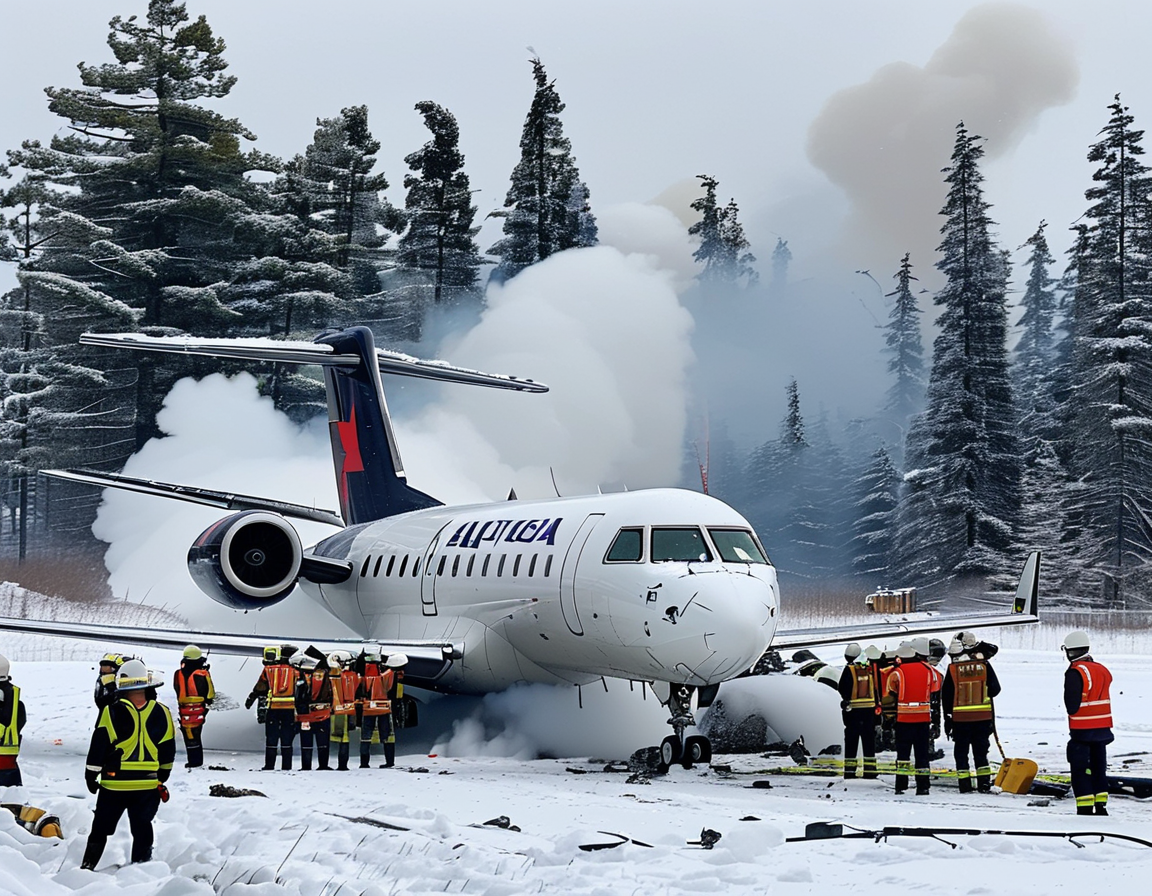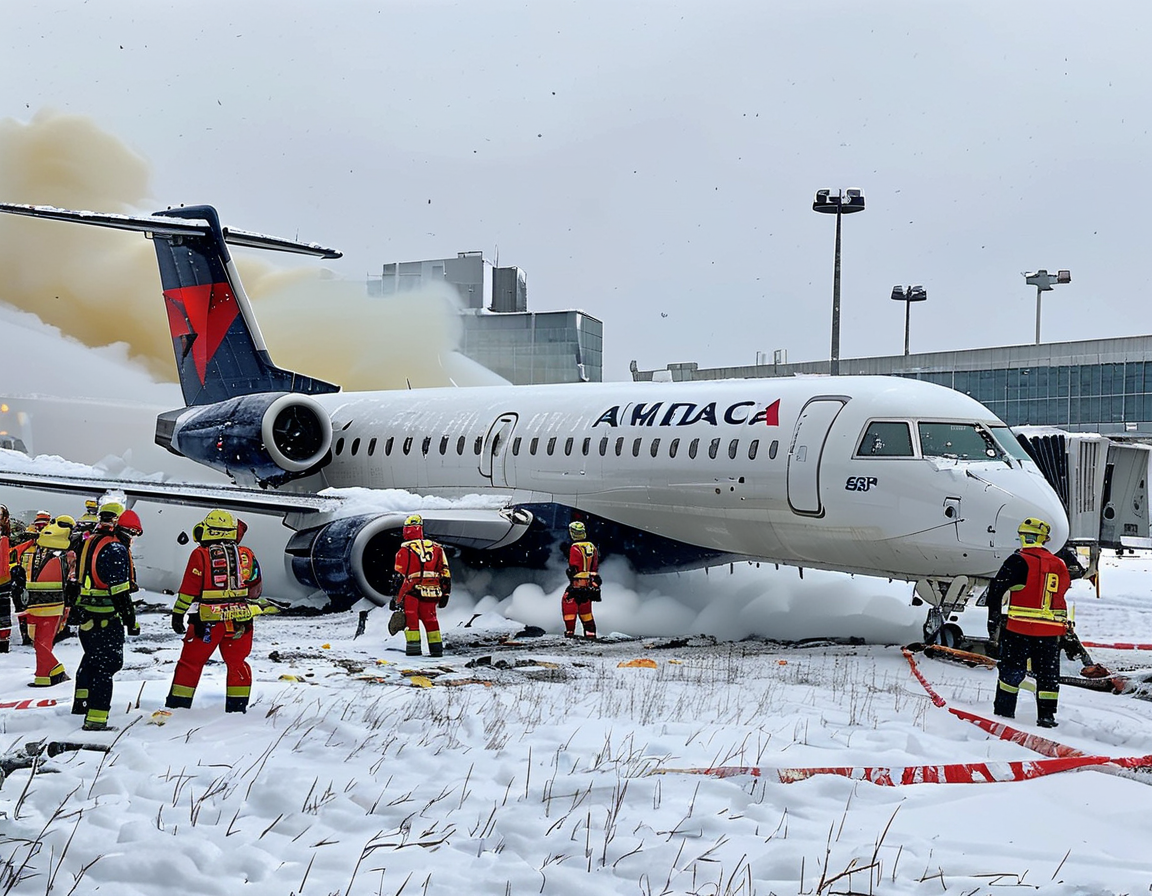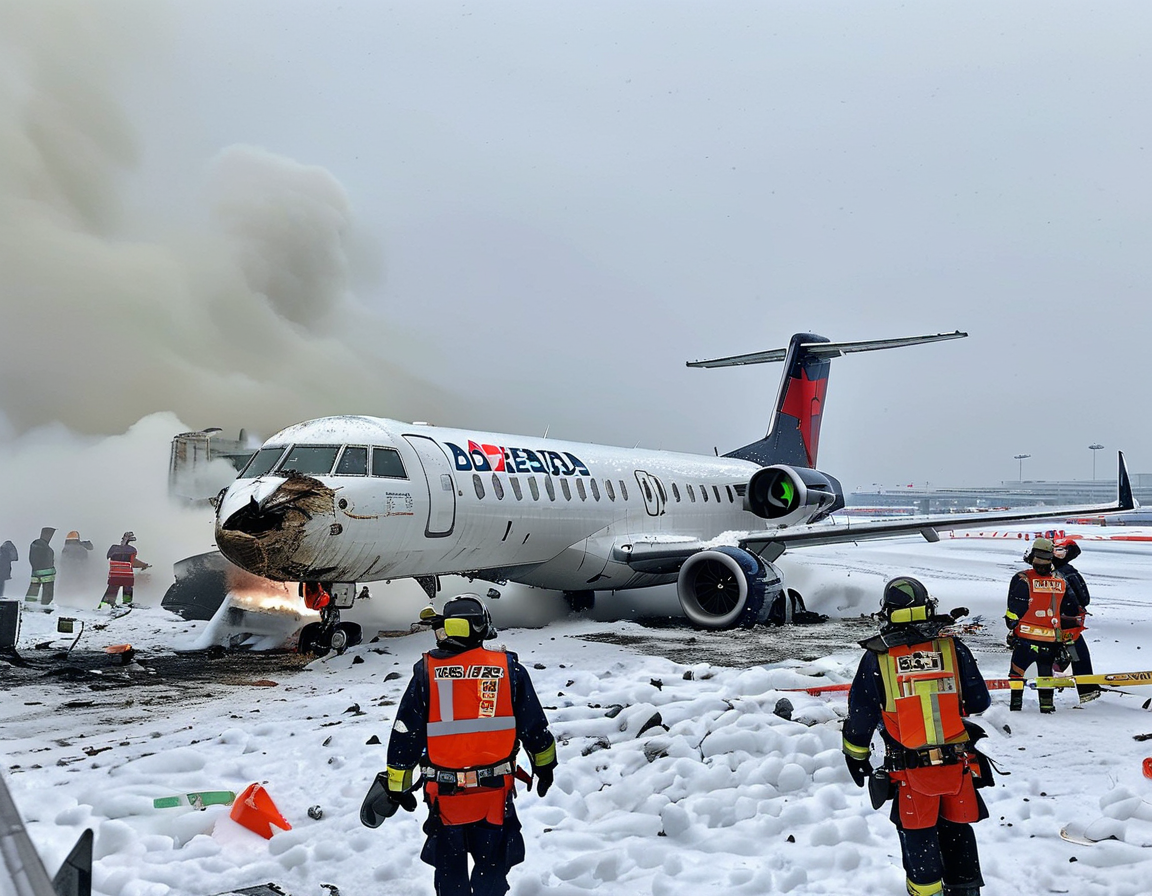The world watched closely as news broke of a dramatic plane incident. At Toronto Pearson International Airport, a Delta aircraft flipped over upon landing. This shocking event occurred just as a winter storm bore down on the area, leaving onlookers and families glued to their screens. How can such an accident happen?

Passengers detailed the harrowing moments during and after the landing. One traveler, John Nelson, shared a startling video. ‘We just landed. Our plane crashed. It’s upside down,’ he noted. His voice trembled but remained calm. Most survivors reported feeling shaken but otherwise safe.
By 3:30 PM local time, emergency teams rushed to the scene. Their swift actions were crucial in securing the safety of all involved. Thankfully, there have been no reported fatalities. However, at least 19 people sustained injuries, with several remaining in critical condition. The situation was dire, especially for a child who was quickly transported to SickKids hospital.

As rescue workers worked through the chaos, a police officer confirmed that all passengers were accounted for. Constable Sarah Patten emphasized the ongoing investigation. ‘We’re still on scene investigating’, she stated. But one troubling question lingered: What went wrong during the landing?
The adverse weather conditions cannot be overstated. Toronto faced severe winter storms, accumulating over 22 centimeters (8.6 inches) of snow over the weekend. The icy environment likely played a role in the plane’s difficulties. The storm rattled not just the passengers but also everyone watching the news unfold.

In the moments that followed the crash, images surfaced on social media. The jet, a Mitsubishi CRJ-900LR, lay turned on its belly, smoke curling from its rear. The sight was startling, resembling scenes from a disaster movie—yet it was all too real for those on board. Each picture told a story of survival, relief, and shock.
What will the investigation reveal? The Transportation Safety Board of Canada quickly mobilized a team to uncover the truth. Questions about oversight and weather preparedness remain. Did the pilots have enough information on the conditions? How can tragedies like this be prevented in the future?
The impact on Toronto Pearson Airport was immediate. For about 90 minutes, operations were halted. Travelers were inconvenienced, with both arrivals and departures disrupted. Frustration grew among passengers, many sharing their concerns on social media.
In the midst of this chaos, the aviation industry faces its own trials. Recently, mass layoffs at the Federal Aviation Administration have left the agency reeling. Hundreds of workers were let go, raising eyebrows about safety measures. Many worry that such cuts will strain an already pressured fabric of aviation safety.
The ongoing debate about workforce size continues. President Trump’s administration claims efficiency, but unions argue against cuts. It’s hard to ignore the potential risks involved when pushing for reduced spending. Are safety concerns being sacrificed?
As the dust settles on this disturbing incident, many questions linger. Yet, for the moment, the priority remains clear: ensuring the well-being of everyone involved. Victims are receiving needed care, families anxiously await updates, and investigators work to piece together the puzzle. In the aftermath of turbulent skies and chilly winds, community support shines brightly amidst the chaos.




